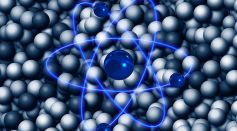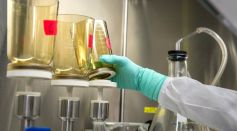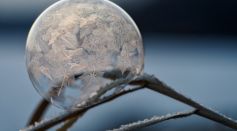CHEMISTRY
How Can Droplet-Based Generators Improve Fabrication Strategies?

Smoke-Like 'Invisibility Cloak' Underway for US Troops to Replace the Controversial White Phosphorus
Commercially-Available Chemical Fertilizer Developed to Enhance Crop Production to Rebalance Nitrogen Cycle

Newly Built NeuRRAM Neuromorphic Chip Can Work Cognitive Tasks Without Network Connection to a Centralized Server

Scientists Created Colorful Solar Panels to Make Them More Captivating to Onlookers

Mysterious UV Absorber on Venus Atmosphere Identified [Study]

How Detergents Work to Kill Viruses Like COVID-19

Laser Beam Triggers the Polarization of Several Atoms Helping Researchers to Understand Astrophysics and Dark Matter

What Is Pineapple Sting ‘Bromelain’? Food Scientist Reveals Its Chemistry That Causes Burning Pain

Chemical Reaction Using Cyanide, Ammonia and Carbon Dioxide Yields Amino Acids Maybe the Origin of Life

Nano-Petri Dish Created by Scientists Allows the Observation of Atom Behavior in Liquid

Human Researcher Loses to Artificial Intelligence IcePic Algorithm in Determining Ice Crystal Formation
Single Molecule Forced to Twist Into Different Shapes; First-Time Chemical Occurrence for This Type of Atomic Bond Arrangement

What You Need To Know About Neutral Spirits For Beverages
Most Popular

Ancient Hotspot Found to Have Created Great Lakes 300 Million Years Ago

Mysterious Structures Discovered Beneath the Pacific Ocean, Puzzle Scientists

Largest Known Volcanic Aquifer Discovered Beneath Oregon's Cascades

New 'Supergiant' Sea Bug Found in South China Sea, Named After Darth Vader





